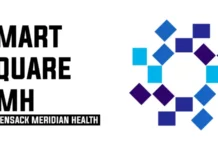Did you know that Americans pay $3.4 trillion a year for healthcare?
Healthcare is a vital service for every country and the way we view it has changed a lot over the years. Whilst the medical industry hasn’t always been the quickest to evolve, it’s definitely speeding up now.
With new technology and innovation, your healthcare is improving each year. The way medical professionals diagnose and resolve your medical issues is becoming much more advanced. For example, you can get help from the cosmetic dentist modesto and learn about their laser dentistry or more of their dental technology.
For a closer insight into how medicine is changing, take a look at some of the technological trends in healthcare you can expect to see in 2020 and beyond.
A Rise in Telemedicine
When it comes to tech trends in healthcare, you can be sure to see a rise of telemedicine in the coming years. This should become especially prevalent in areas where access to doctors and medical professionals is harder to come by.
It’ll also help the US cut down its wait times, which has become an issue in recent years. In fact, a 2017 report shows a wait time of 24 days in 2016 compared to 18.5 in 2014, which is a rise of 30%. It wouldn’t be unlikely that this has increased again.
Telemedicine would allow people access to a wider range of medical professionals far quicker. It’s also life-changing for people who aren’t mobile and can’t. As the technology for this tool advances, it’ll become more widespread.
Soon, you may never have to leave your house to get the medical care you need!
Advancements in Healthcare IT
Alongside telemedicine are advancements in healthcare IT, like this radiology information system. These systems are usually cloud-based and provide wide access to information.
Professionals can use these platforms for a variety of purposes, such as for storing medical files for patients. They can then share the information with other professionals at the click of a button. This reduces the chance of error and misinformation, whilst optimizing the consultation process.
It’ll also let you see your own files so that you can keep track of your own medical history. You can check doctor’s advice and share your information with other relevant professionals.
These advanced IT systems are highly secure and optimized for the healthcare system. They’re designed to make the consultation process much more efficient.
AR and VR Technological Trends in Healthcare
When it comes to 2020 healthcare trends, one of the most exciting has to be the advancements in AR (augmented reality) and VR (virtual reality). These tools provide incredible opportunities to improve our medical care.
One way they can be used is by providing realistic, hands-on training for medical students. They’ll be able to carry out operations and procedures in a realistic setting, helping improve their skills.
It can also help some patients, such as those who are suffering from motor problems after a stroke. By using VR and AR, doctors can create enhanced environments designed to help them increase their motor skills. At the moment, a lack of a stimulating environment is a challenge when treating those with motor difficulties, but this could overcome the problem.
It’ll also allow surgeons to plan and practice difficult procedures before doing them. They’ll be able to spot any room for improvement and minimize the chance of error through practice.
When it comes to trends to look out for in healthcare tech, this is definitely one that’ll have a big impact!
Wearable Technology to Track Health
If you’re into wearable technology, you’ll be pleased to hear it’s one of the biggest trends for 2020 healthcare tech. These are already appearing in society, with smartwatches becoming increasingly more common and FitBits on every fitness fanatics’ wrist.
This wearable technology can help you monitor your own health, and 80% of consumers are willing to do so. From wearable ECG monitors to keep track of heart rhythm to monitoring blood pressure with a smartwatch, they’re incredible tools that make keeping track of your health easier.
Biosensors are also expected to be used more frequently in the near future. They’re small patches that are placed on the skin and can track movement, respiratory rate, temperature, and heart rate. In terms of patients at risk of cardiac or respiratory arrest, this could be life-saving.
Predictions From Data Science
The world has been relying more on data science over the past few years. Now, it’s starting to make waves in the healthcare community.
Data science for medical purposes will look at two things; personal and family medical history, and environmental factors. For example, data from a family may highlight a tendency for arthritis. The doctor can then keep an eye out for these symptoms and put preventative measures in place.
They can also track localized problems. This involves tracking certain illnesses to specific regions or trades. Once they know the origin of a condition, they can start looking for the cause.
It can also improve treatment efficiency. Patients that are more likely to re-admitted after their initial treatment based on family or personal history and environment may be treated for longer to prevent this. It can also be used to predict outcomes of treatment based on other similar patients.
Data science is crucial to moving the healthcare industry forward. This analysis may lead to breakthroughs in treatment and help short-term care become more effective to prevent long-term treatments.
Follow the News
There are plenty of technological trends in healthcare that will innovate the medical industry over the coming years. From digital software to tech we can all wear, the way doctors diagnose and treat is becoming more advanced with the help of technology.
Keep up to date on these innovative trends and other healthcare news by checking out more articles on our website.



































































